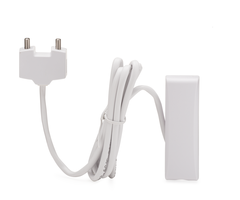A Lesson in the Importance of Flood Sensors
Posted By Michael GorisFormer "Malcom in the Middle" child star Frankie Muniz had a devastating experience last week. While visiting France to attend his uncle's funeral, Muniz's cat managed to turn on his sink. It flooded the house, destroying every wall, various pieces of artwork, personal photos and furniture.

The incident cost Muniz thousands upon thousands of dollars in damages to his five-story Phoenix house. He also lost priceless items that can never be replaced. It truly is a horrific event. We're sure that Muniz will overcome this challenge. He's a resilient man who currently serves as the host for "Dancing with the Stars: Juniors". He even recently got engaged. In the grand picture, this is just a small step back.
But we're also sure that this is a mistake he will never make again. Luckily, it's one that can be avoided fairly easily. Almost every security system can support flood sensors that can be used to let an end user know before serious water damage occurs. Once a small water leak is detected, the flood sensor will alert the alarm control panel. The user can then receive text and/or email alerts through an interactive service like Total Connect 2.0 or Alarm.com to let them know that their flood sensor has been triggered. Most flood sensors will activate with as little as a quarter-inch of water. This is well-before any serious water damage occurs.
Some users may wonder what to do if their flood sensor activates while they are away from home.The answer is fairly obvious. The user should determine the cause and stop the leak immediately if there is one. If you have a smart door lock, you can let a trusted friend or a neighbor into your home temporarily so that they can turn off the faucet or alert a plumber. You may also want to have security cameras in your home so that you can visually check for any flooding that may occur.
The thing to remember is that flood sensors are not very expensive. And many flood sensors will last as long as an alarm system itself. This one-time investment is much, much cheaper than the costs associated with a flooded home. Plus, many items are simply irreplaceable. If you value your home and your belongings, a few flood sensors is a small price to pay to protect what matters.
Some of our most popular flood sensors include the Honeywell 5800FLOOD, the 2GIG FT1-345, the Qolsys IQ Flood, the DSC WS4985 and the DSC PG9985. All of these sensors work very well, and they can save you thousands of dollars in the event of a serious water leak or accident. Just make sure the one you choose is compatible with your alarm system. You can purchase any of these sensors from the Alarm Grid website right now. Remember, stay smart and keep your home protected!

 The 5800FLOOD is a great device for anyone who needs reliable monitoring for water leaks or potential flooding. The sign of a good
The 5800FLOOD is a great device for anyone who needs reliable monitoring for water leaks or potential flooding. The sign of a good 
 Flood sensors typically operate using a water probe. On these probes, there are pins that will cause the sensor to activate when they come into contact with water. Depending on the type of sensor, the pins may need to be exposed to water for a couple of minutes before the sensor will activate and an alarm will occur. This can be helpful for reducing false alarms and only alerting the system when there is a real flooding concern. Some probes come already attached to sensors. Others, like the
Flood sensors typically operate using a water probe. On these probes, there are pins that will cause the sensor to activate when they come into contact with water. Depending on the type of sensor, the pins may need to be exposed to water for a couple of minutes before the sensor will activate and an alarm will occur. This can be helpful for reducing false alarms and only alerting the system when there is a real flooding concern. Some probes come already attached to sensors. Others, like the